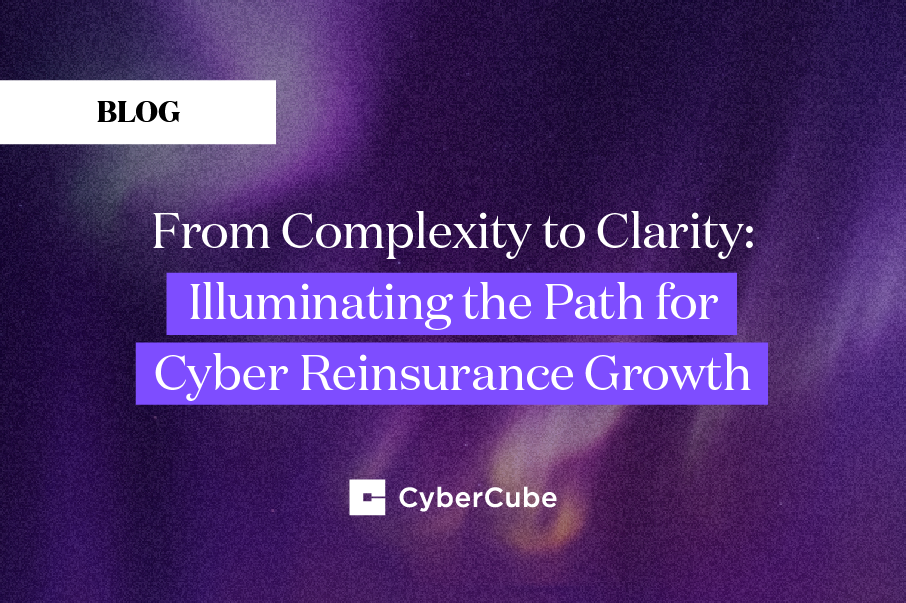Cyber insurance underwriting is changing as cyber threats evolve. You must keep up with the underwriting process that’s evolving with it. The rise in cyber events, data breaches and ransomware attacks has meant that risk management is more crucial than ever.
That’s where cyber risk modeling comes in. The right end-to-end solution that fits your needs will help improve the underwriting process, leading to successful long-term underwriting decisions.
However, knowing what to look for in a cyber modeling solution can be difficult, especially with the amount of data out there. Filtering out the pearls of wisdom from the oceans of information available can be a challenge — which is why you need a modeling tool that does it for you!
In this blog, we’ll cover five essential features — from the ability to parse out the right data to quantifying loss potential — that will enable you to underwrite cyber risk accurately and profitably.
1. Verified exposure data
Data can either be your best friend or your worst enemy. While data is crucial to underwriting cyber risk, there can be too much of it. It can become noisy or overwhelming, particularly when dealing with unverified or conflicting data from varying sources.
What’s more, you may not even have all the relevant data you need, and it goes without saying that incomplete firmographic data is insufficient. This can prevent you from efficiently carrying out your duties — after all, without access to the right data, how can you understand which enterprises to insure?
This is where cyber risk modeling can provide the data you need to piece together the complete picture of a company’s cyber risk posture. Specifically, you need verified exposure and security data at your fingertips to help quantify the risk of potential clients and make informed assessments.
The right end-to-end solution will not only give you easy access to this information, but it will curate the intelligence you need. It will do the heavy lifting for you, so that you can identify the critical data efficiently without wasting time — empowering you to make profitable underwriting decisions.
2. Critical signals with statistical significance
Assessing cyber risk isn’t just about having a complete set of firmographic data — you also need to be able to parse data to best select risks. Doing this effectively means using the right signals to help make good judgement calls on which companies to underwrite. A standard cyber modeling solution may provide scores to do this, however, these can often be too broad to make informed decisions.
As well as risk scores, identifying critical signals with statistical significance can help you make stronger risk choices. For instance, security signals can provide a view of both the defender’s perspective via the National Institute of Standards and Technology (NIST) and the attacker’s vantage point via the cyber risk kill chain. Examples of some cyber risk signals you should have access to within your modeling solution include:
- Exposed credentials
- Infrastructure infections
- Ransomware infections and vulnerabilities
- Email security
- Suspicious outbound traffic
- RDP open ports
- Software vulnerabilities
These signals are relevant to the cybersecurity hygiene of an organization — and their statistical significance will empower you when making your underwriting decisions. This can ensure you can detect higher risk organizations.
CyberCube recently featured in a study evaluating the significance of cyber risk signals on cyber policies. Download it here for free to learn more — Improve Loss Ratios with CyberCube's Predictive Analytics.
3. Actionable insights
Effective signals can also help establish actionable insights, i.e. taking technical signals and simply explaining what those signals mean and what to do next. A problem for many underwriters is that they’re using the wrong modeling solutions and often don’t know what to do with the information they get.
It’s not enough to only have access to cybersecurity scorecards — there needs to be an insurance context that can provide more guidance on how to approach underwriting decision making.
The right actionable insights functionality can help demystify some of the more complex aspects of cybersecurity, helping you to understand what to do with the data you have. Recommendations for cyber risk mitigation can make it easier when negotiating with brokers or insureds for both new submissions and renewals.
Actionable insights aren’t just for generalist or non-technical underwriters who need more help understanding cyber security information — these insights can benefit technical underwriters too.
For example, data could reveal areas of concern for a client’s cybersecurity hygiene and technical underwriters could require more guidance on the appropriate next steps. This is particularly helpful when working under time pressure. Actionable insights can provide that extra assistance to enable a more efficient and streamlined underwriting workflow.
4. The ability to quantify loss potential
The right data, actionable insights, and signals can each assist in the risk selection part of the underwriting workflow, but a solution that quantifies loss potential is also extremely valuable. This can help to justify your underwriting decisions.
With a cyber risk modeling solution that quantifies loss potential, you can:
-
- Better understand loss events of a company
- Identify attachment points
- Quantify the likelihood and magnitude of a loss
- Estimate losses from specific cyber event types
- Break down losses for particular events into distinct coverage types.
This can help you define and defend profitable pricing levels, as well as assist in setting premiums, retentions, limits and coverage types, which helps smooth the negotiation process.
5. Knowledge of technology dependencies
While it’s important to note a company’s cybersecurity hygiene and scores, as well as quantify loss potential, understanding its tech dependencies is also key to underwriting risk.
The right cyber risk modeling solution can include information about a company’s broad technology stack, helping to illuminate its potential supply chain risk. This can include details about its potential providers for cloud services, financial technologies, and IT governance technologies, to name a few.
Having this data will not only help you accurately underwrite risk, but it will also help you justify your assessments. Again, this can also be helpful during negotiations and renewal processes.
Find out more about how technology dependencies impact cyber risk in our free whitepaper — Building Blocks of a Catastrophe Scenario: Understanding Supply Chain Cyber Risk and Single Point of Failure.
Cyber risk modeling that empowers underwriters
The right cyber risk modeling solution should empower underwriting teams to make consistent and informed appraisals of risk. The tool you use should also be tailored to your company’s goals with a customizable approach to risk tolerance, ensuring you make profitable underwriting decisions.
Here at CyberCube, we not only understand cyber risk, but we also understand underwriting cyber insurance. The result of this expertise is our single risk underwriting tool, Account Manager.
Our solution demystifies data and equips underwriters with actionable insights. This is achieved by taking unique inside-the-firewall data and external security data, and pulling it together into a comprehensive, understandable view of security and exposure posture for any account you’re evaluating. Then, it will provide actionable insights, ensuring you make confident and successful risk decisions that yield long-term profitability.
To find out more about choosing the right cyber risk modeling solution that will help improve your underwriting workflow, check out CyberCube’s underwriting analytics solution below.




